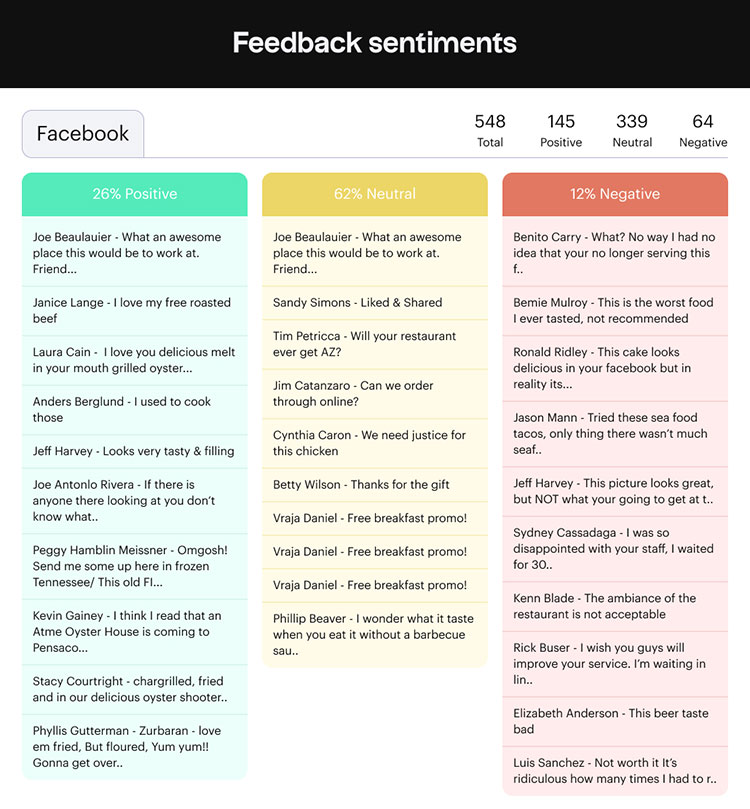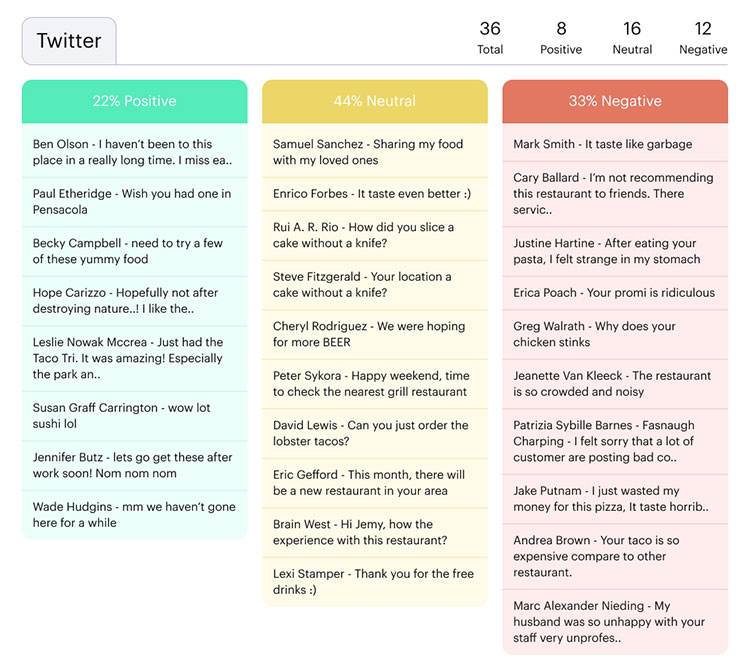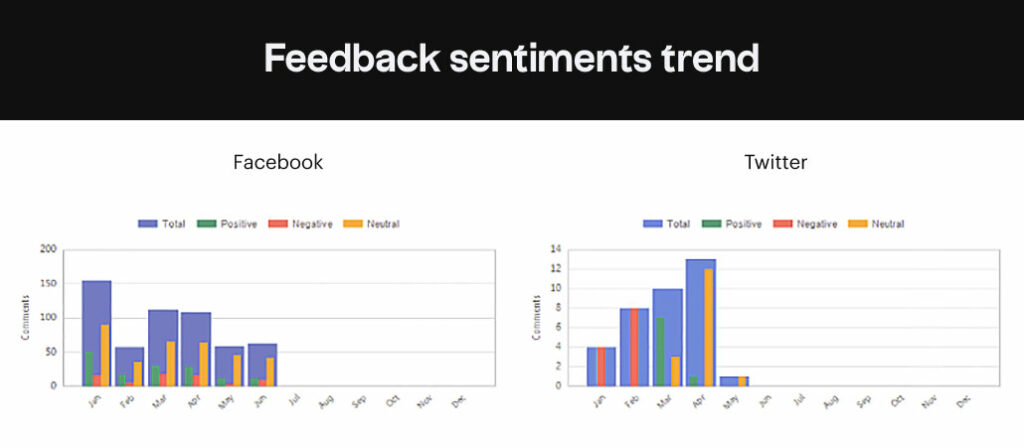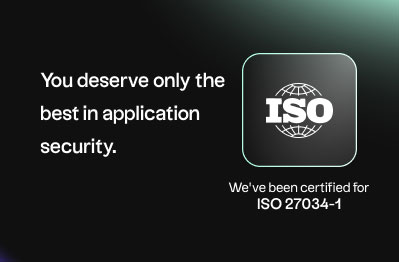
Modern social analytics tools expand the insights you can get into the performance of your products, services, and related marketing campaigns. Looking beyond internal data sources, these tools can analyze external sources, including social media, chats, and forums, to reveal what your customers really think about your company’s services.
This type of analysis is called sentiment analysis—identifying and categorizing written opinions to discover whether the writer’s attitude towards what you sell and how you sell it is positive, negative, or neutral.
1. Understand your customers’ tone and intent
Sarcasm, slang, phrases, and colloquialisms—humans can usually identify them immediately in people’s speech and writing. Computers have a more difficult time.
Consider this comment: “I stood in line for 30 minutes. Amazing!”
A human would immediately see this as negative and sarcastic but a machine, if given no context, would flag this as a positive comment.
Now there are ways to provide this context. Customer sentiment analysis is augmented with advanced machine learning techniques, rules, dictionaries, and algorithms to teach machines to properly categorize comments like this.
“Amazing!”, “30 minutes”, and “stood in line” can all be analyzed in context to determine that this is a very negative comment. This helps you address negative reactions to your marketing campaigns, products, and customer service without worrying about misinterpretations or missed feedback.


2. Gain valuable insights
A sentiment analysis provides valuable insights into what exactly your customers are saying and how they feel about everything your company does. It can help you avoid PR disasters, improve customer service, and enhance your products and services.
For example, let’s say your company sells a productivity app for iOS and Android. You release a new version with new features and an improved interface. You can use sentiment analysis to discover whether your customers are happy with the new features, adjusting well to the new interface, and reacting positively to your launch posts on social media.
If you see negative reactions, such as comments about software bugs or interface problems, you can communicate effectively and patch the app quickly before you lose customers.
3. Get ideas for marketing and PR
Seeing how your customers feel and react to your products and services can also open up new marketing opportunities and use cases for your products.
You can find out if your customers need a particular feature or are using your services in ways you never considered. It can help you refocus your marketing initiatives and improve your services. Focus groups and beta tests don’t always reflect the real world!
You might also see interesting opportunities for PR, like providing relief for a regional disaster (an airline might see an increase in negative comments from Alberta or California due to wildfires and offer discounted flights) or targeting the needs of non-profits or a particular minority.

4. Improve the ROI of your marketing campaigns
The success of your marketing campaigns goes beyond just looking at conversion rates, likes, comments, and ad performance.
Getting insight into the number of positive, negative, or even neutral online comments will help you see how successful your marketing campaigns—and related areas like customer service and PR—are at keeping your current customers happy while drawing in new ones.
Having both qualitative and quantitative metrics can help you verify and increase the ROI of your marketing campaigns.





